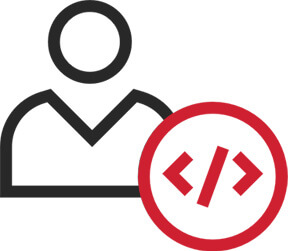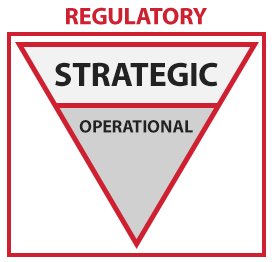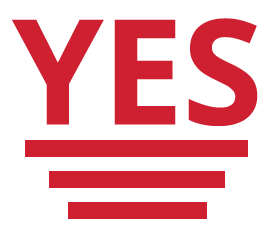The digital transformation of municipalities has morphed over time from simply being a trendy “buzz word”, to becoming a central component of a modern municipal business strategy. Fortunately, government leaders are really starting to leverage modern technology to implement and improve administrative best practices.
“Smart governments integrate modern technology into their day-to-day operations to enhance engagement with citizens and other stakeholders to drive better outcomes – And, better technology improves public administration.”[1]
Modern technology is revolutionizing and transforming all aspects of public administration – everything from the way you manage your public works and assist citizens, to the way you administer your learning and development programs.
An LMS is a software application that helps organizations manage the administration, documentation, tracking, training and reporting of their Learners. It reduces the time, effort and cost of training programs while offering deeper insight into your Learner’s experience, compliance and progress. The number of organizations that now use learning management systems (LMS), is higher than ever before and digital learning and training is becoming more widely accepted and used.
That’s why it’s hard to understand, with all the proven efficiencies and benefits of using LMS software and digital learning, why some learning and development professionals still consider expensive, face-to-face, instructor-led training preferable to digital learning?
So, here’s a case for going digital:
It Breaks Down Silos – Different departments often use different systems resulting in decentralization and “everybody doing their own thing” with training and development. Centralizing your learning and development programs by using an LMS, eliminates the decentralization that results in scattered data across multiple municipal departments and improves management analytics and reporting so more informed decisions can be made.
It Eliminates Spreadsheets – Spreadsheets and legacy systems are unwieldy processes that lead to increased errors and a limited ability to track and monitor training, which ultimately results in frustration.
Produces IT Savings – On-site software requires in-house IT resources and expensive IT ongoing maintenance. It needs to be updated continually – plus it’s difficult to access information across departments and away from the office.
Using cloud-based software and Software-as-a-service (SaaS), eliminates the time spent on installations and manual software updates, while at the same time providing a more cost-effective solution that saves time and provides online data centers with far greater computer power and storage capacity.
You Can Do More with Less – Transforming your learning programs to digital learning simply allows you to deliver more training to more learners at less cost. It stretches training budgets because it reduces training costs (less travel, time away, travel expenses etc.)
Deliver consistent learning across your organization, anywhere, anytime – Maybe you need to deliver the same compliance course to various departments in your municipality at the same time? An LMS and digital learning makes this easy.
Adopting digital learning lets your team obtain certifications such as PMP, Change Management, Risk Management and more – right from their desktops – at a fraction of the cost of traditional classroom learning to acquire the same certifications.
Puts you ahead of the curve in your ability to entice younger workers – many of them are quite used to digital learning already.
It’s predicted that over the next 5 years, 51% of senior municipal staff members employees will be eligible to retire. Therefore keeping the current workforce engaged –millennials, generation Xers and baby boomers included – is essential to the success of each municipality. When you create a modern digital workplace and give employees tools to help them do their jobs it helps drive employee engagement, which keeps more young professionals in local government.
Establishes the right learning opportunities for tomorrow’s leaders – You can create Learning Paths and Learning Objectives within an LMS to ensure you are helping shape tomorrow’s leaders.
Improved control over the creation, deployment and management of your own training initiatives and staff development.
And More…………
As digital technology continues to evolve successful digital transformation will require careful collaboration, thoughtful planning and the inclusion of every department.
However, digital transformation isn’t only about technology, it’s about meshing the power of technology with a corporate culture that embraces the change technology can lead for the organization.
Any learning initiative needs employee buy-in and the support of upper management. And often organizations need assistance to help them create a strategic roadmap to guide them through their digital learning and development transformation.
We wanted to know why municipalities have been slow to adopt new technology to transform their learning and development programs so we conducted a survey in 2017. What we learned was, that while municipalities would like to have an LMS, purchasing their own LMS software is a huge capital outlay that is simply cost-prohibitive for many municipalities. In addition, we heard that those municipalities who already have their own LMS have a hard time sourcing quality, accredited training.
So, we developed muniLEARN – a collaborative learning management solution for municipalities that’s intended to be an end-to-end solution to help them as they navigate through their learning and development transformation and digital learning.
muniLEARN is a robust, secure, turn-key learning platform that lets you manage the deployment of your own learning and training initiatives – digitally, in a cost-effective manner.
If you’re considering transforming your learning and development program, Click here to try our free needs assessment tool to check your readiness to transform, or
Contact us at [email protected] for:
- More information about muniLEARN and/or a free introductory demo for your team
- How your municipality can participate in our free Pilot Program to test drive using an LMS and digital learning
Remember, Learning Isn’t Where You are, It’s What You Do!
By: Susan Shannon, Founder & Principal of muniSERV.ca.
[email protected] or at 855.477.5095
[1] The Digital Transformation of Public Administration – OpenGov







.png)



